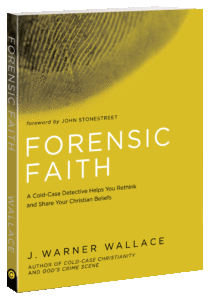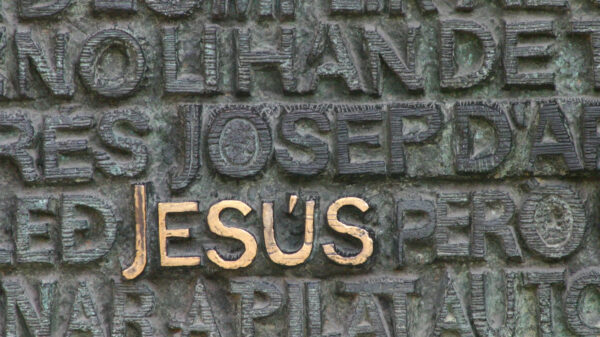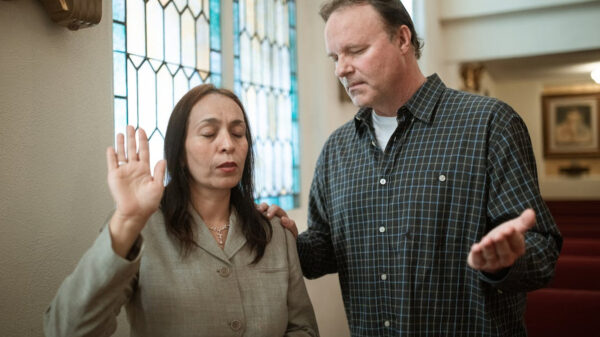
I remember my own journey from “belief that” to “belief in”. It began with an intensive investigation of the gospels as I examined them from the perspective of eyewitness accounts. I spent several months poring over the canonical gospels in an effort to mine out the red letters of Jesus. Along the way I employed the tools I learned as a detective and eventually decided the only thing preventing me from accepting the gospels as historically reliable eyewitness accounts was my presuppositional bias against anything supernatural. I eventually determined that the gospel writers were reliable eyewitnesses.
At this point in my journey, I believed “that” Jesus was who He said He was, but I was still much like Nicodemus; I had “belief that” but no “belief in”. Nicodemus visited Jesus late at night and told Jesus, “Rabbi, we know that You have come from God as a teacher; for no one can do these signs that You do unless God is with him” (John 3:2). Nicodemus had been investigating Jesus and, based on what he saw and heard, he believed “that” Jesus was a Godly teacher. Jesus told Nicodemus this was insufficient; Nicodemus needed to be born again and “believe in” Jesus for his salvation. He told Nicodemus, “For God so loved the world, that He gave His only begotten Son, that whoever believes in Him shall not perish, but have eternal life. For God did not send the Son into the world to judge the world, but that the world might be saved through Him. He who believes in Him is not judged; he who does not believe has been judged already, because he has not believed in the name of the only begotten Son of God” (John 3:16-18).
Every one of us, at some point in our investigation of the claims of Christianity, has to move from “belief that” to “belief in”. I can remember telling my wife, Susie, that I had come to the conclusion the New Testament gospels were reliable; I believed they were telling me the truth about what Jesus said and did. But I still didn’t understand the Gospel of Salvation. I still didn’t know why Jesus had to go to the cross. So I asked her, “Do you understand it?” She didn’t have a good answer for me either. As a rebellious, self-reliant detective, I still denied my need for a Savior, even though I accepted what the gospels told me about that Savior. In order to take a step from “belief that” to “belief in”, I needed to move from an examination of Jesus to an examination of Jim.
As I read the gospels for a second and third time and explored all of the New Testament scripture, I began to focus more on what it said about me than what it said about Jesus. I didn’t like what I saw. Over and over again, I recognized the truth about my own character, behavior and need for forgiveness; I began to understand my need for repentance. The facts about Jesus confirmed that He was the Savior, the facts about me confirmed my need to trust in Him for forgiveness. I was now ready to move from “belief that” to “belief in”.
All of us need to be good Christian Case Makers so we can defend what we believe about God and make the case for the claims of Christianity. But we need to be careful to understand the proper role of evidence and the important distinction between believing the gospels and trusting the Gospel. I want to be more than someone who understands and accepts the evidence about Jesus. I want to be someone who understands and accepts the evidence about me. Only then will I begin to place my trust in the Savior that the New Testament reliably describes.
All of us need to be good Christian Case Makers so we can defend what we believe about God and make the case for the claims of Christianity. Click To Tweet
J. Warner Wallace is a Dateline featured Cold-Case Detective, Senior Fellow at the Colson Center for Christian Worldview, Adj. Professor of Christian Apologetics at Talbot School of Theology, Biola University, author of Cold-Case Christianity, God’s Crime Scene, and Forensic Faith, and creator of the Case Makers Academy for kids.
Subscribe to J. Warner’s Daily EmailSave
Save
J. Warner Wallace is a Dateline featured cold-case homicide detective, popular national speaker and best-selling author. He continues to consult on cold-case investigations while serving as a Senior Fellow at the Colson Center for Christian Worldview. He is also an Adj. Professor of Christian Apologetics at Talbot School of Theology, Biola University, and a faculty member at Summit Ministries. He holds a BA in Design (from CSULB), an MA in Architecture (from UCLA), and an MA in Theological Studies (from Gateway Seminary).









































Pingback: The Thing That Justifies You Is Your God | Cold Case Christianity
Pingback: The Frustrating Fallacy of Friendship Evangelism | Cold Case Christianity
Pingback: All of Us Ought to Agree on the Fallen Nature of Humans | Cold Case Christianity
Pingback: Believing the Gospels Is Different Than Trusting the Gospel | Truth2Freedom's Blog
Pingback: Jumping Over the Evangelism Wall | Cold Case Christianity
Pingback: The Danger of Belief “In” Without Belief “That” | Apologetics ForumApologetics Forum
Pingback: When Belief “That” Becomes Belief “In” | Christian Apologetics
Pingback: The Danger of Belief “In” Without Belief “That” | Cold Case Christianity
Pingback: When Belief “That” Becomes Belief “In” | Cold Case Christianity
Pingback: The Thing That Justifies You Is Your God | TLG Christian News
Pingback: From Belief That to Belief In | Christianity 201
Shannon Pool
July 8, 2021 at 2:31 am
If I knew how to reach you directly I could explain if better detail or have an on going dialogue.
Illogical atheist Richard Dawkins gives the best biological understanding to the natural phenomenon that brought about Jesus.
A meme organism that has cognition capability and produced an offspring.
John 1:1 In the beginning was the logos, the logos was with God and was God. John 1:14 … the logos become flesh.
John 3:6 Flesh gives birth to flesh, but the Pnuema gives birth to Pnuema.
Logos being greek for thought, word, speach( and reasoning – cognition capability). Pnuema correlates with ruach old testiment pertaining to the power of words(spoken).
Matthew 5:17 “Do not think that I have come to abolish the Law or the Prophets; I have not come to abolish them but to fulfill them.
For just one example of scholar comparing old to new testiment : Paul Humber author of: 400 Prophecies, Appearances or Foreshadowings of Christ in the Tanakh (Old Testament). This shows us the purported life of Jesus in new testament was a repeat of old testiment”meme”, or logos(thought, word, speech). One view could say, the life of Jesus was preprogrammed by old testiment. D.N.A. is the preprogrammed genetic code that makes up our physical bodies. Not to say our entire lives are preprogrammed by genetic code, but to compare the life of Jesus a “cognition entity”, preprogrammed to fulfill laws and prophets as the words, logos and meme are the programming cognition entity “D.N.A.”.
1 Corinthians 2:16 …But we have the mind of Christ.
Only giving brief overview, we see objectively what they originally meant and and what the new testiment gives eye witness statements for. Now with scientific understanding about cognition and Illogical atheist Richard Dawkins articulation of a mind cognition organism for understanding the natural means of the bringing about of the Egyptian, Jesus style God, into the nation of Israel about 2000 years ago. Isaiah 19:25 … the LORD of hosts has blessed, saying, “Blessed be Egypt my people, and Assyria the work of my hands, and Israel my inheritance.”